How to Build a Wood Floor Countertop
I got lots of questions about my Office wood floor countertop after I posted said that I built it out of Oak Flooring. So, I created some sketches to try to give you a better idea of how you can make all your dreams come true…if you’re wondering how to build counters out of hardwood flooring!

How to Build a Wood Floor Countertop
*I’m purposely not giving you any surface dimensions because you have to build the countertop to fit your work space.
My work space happened to be T-shaped, you could do the same thing with a straight countertop, or L or X or + shaped for that matter!
1. Create a plywood base
- Cut a plywood base the shape of your countertop but subtract the thickness of your finish material from the desired final width. (I used 3/4″ flooring for my countertops so I made my plywood base 3/4″ narrower!) Why? Because you are going to put a “face” on your countertop to make it look thicker, which will add to the total width.
- Use two layers of plywood to create a strong base. If you have seams, stagger your second layer so you’re seams do not end up in the same place. Screw both layers together to secure the seams.
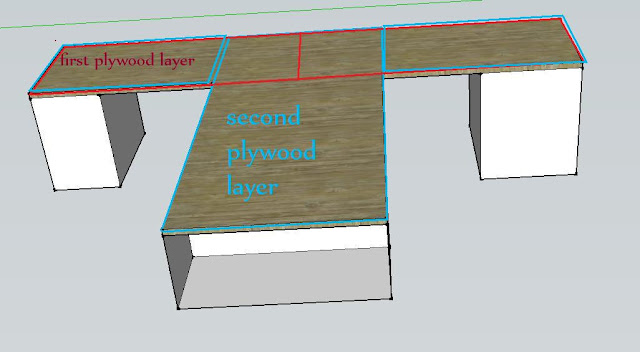
- If the ends of your countertop are going to be exposed, do the same “adjustment” for the length. (My countertop goes wall to wall so the ends don’t matter)
2. Attach Hardwood
I used unfinished 3/4″ Oak wood floor material because it was cheaper than buying regular 3/4″ Oak from the lumber store. Plus, the tongue and groove helped secure each row together without using glue and clamps which I would have done had I used regular wood.
I started on the front and worked my way back. In order for the countertop to appear to be 1 1/2″ thick, I added a 1 1/2″ front edge that was joined with a bevel.
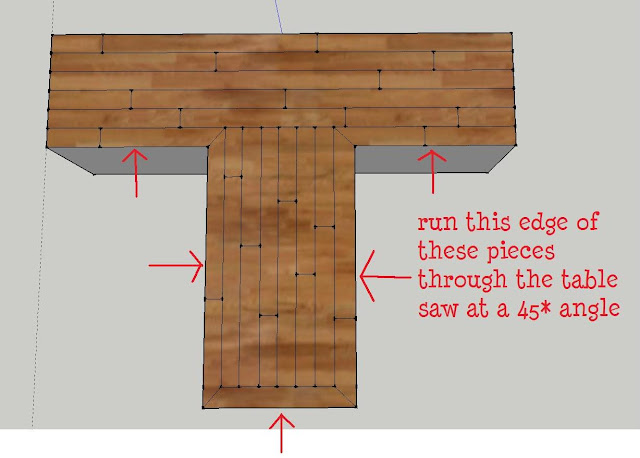
Bevel the first row of wood planks
- Rip enough of your wood floor planks at 45* angles on a table saw. You’ll need enough planks for the whole first row plus a front edge.

- The front edge pieces will need to be ripped to 1 1/2″ wide planks. (My wood was wide enough to get 2 strips out of each plank so I mitered both sides before I cut it to width)
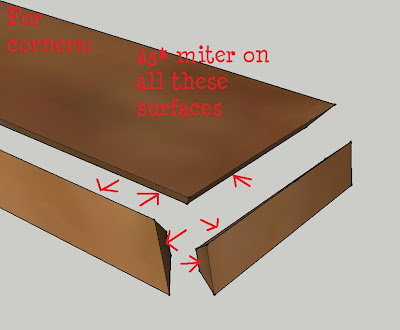
Miter front edge corner pieces
- The corner pieces had to be mitered at 45* angles for the corners as well as the top bevel. I used my miter saw for the end cuts.
Nail wood floor onto MDF countertop base
- I just nailed right through the top since it was unfinished wood. Wood putty in all the nail holes, cracks and corners. The whole thing had to have a good sanding anyway.
- (Make sure you use the proper length nail! I didn’t calculate for that and had to go back after I was finished and pound UP a few nails from the bottom. Don’t want to snag your knees…!)
- Finish! I used (ebony tinted) Tung oil (which I LOVE but make sure you use a RESPIRATOR and the proper gloves if you go that route.)

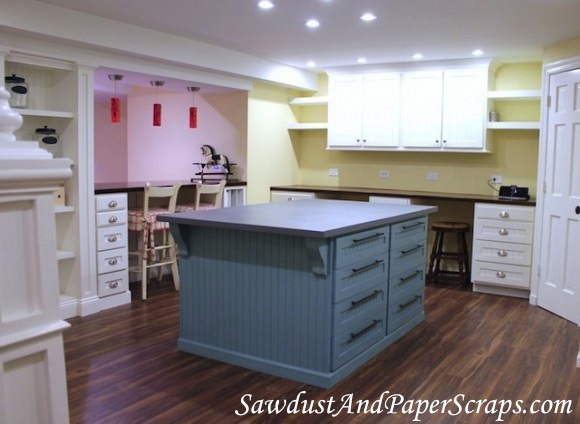


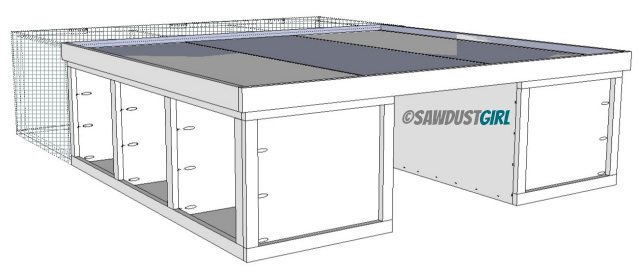
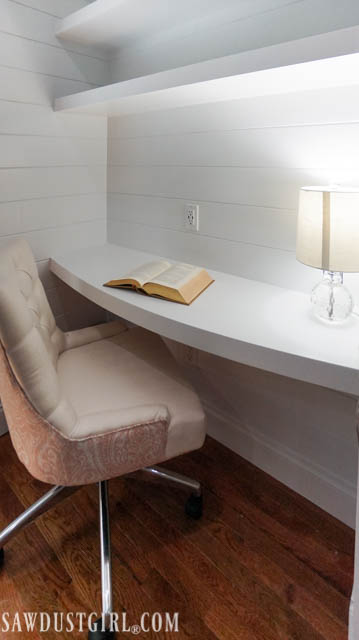
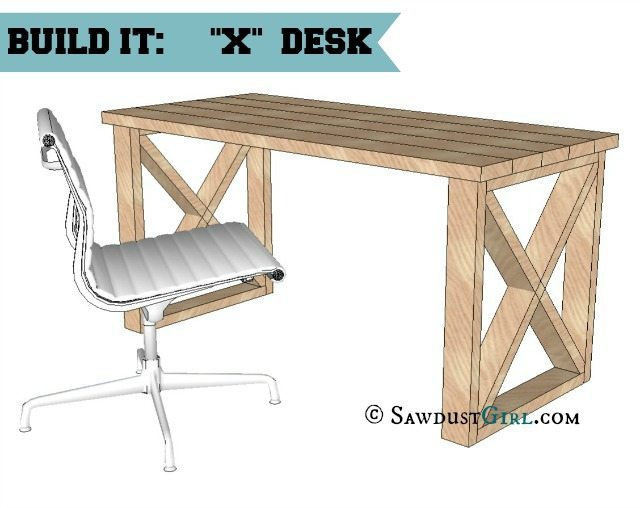
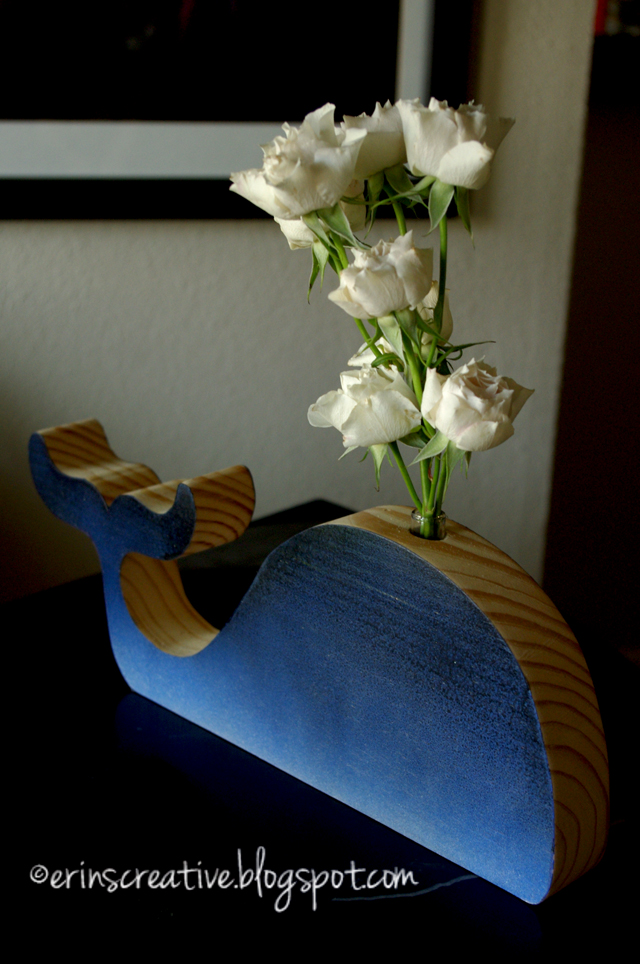
On the subject of using Tung Oil to finish our kitchen counter tops because of its food safe properties once cured; I have subsequently found out that, since the Tung Oil comes from the nut of the Tung Nut tree; the fumes, vapor, and even mild contact with the oil in liquid, and cured states, can cause severe reactions to those with even slight NUT ALLERGIES and Sensitivities. Therefore, we will not be able to use the Tung Oil. Our daughter has Tree Nut sensitivities. Any suggestions for another food safe finish for our kitchen counter project??? Your email reply asked about pictures. Do you have a link I can send some to or up load to? Thank you.
Ray
We have installed 3/4″, tongue and groove, nail it to the foor utility oak, which has knot holes, saw marks, worm holes, fissures, cracks,etc in the wood to floor pretty much the whole house ( except the entry areas, bath and utility rooms, and in front of the fire place).
My wife thought that the 27 y.o. kitchen counter tops would look awesome covered in the left over flooring. We are planning to paint the existing front trim of the counter top black, like the cabinets, and use oak bullnose, or stair nosing, to trim out the front edge of the counter surface. We will place temporary pieces of the bullnose as spacers and work from the front of the counter towards the wall.
We noticed an earlier post where you responded about the tung oil being food safe after it cures. That was great information that we would have needed to investigate. Thanks. We will let you know how it turns out.
RAY and JAN
Mona, I love the look of Tung oil which is food safe after it’s cured but here is an article from Fine Woodworking that lists some other options. http://www.finewoodworking.com/SkillsAndTechniques/SkillsAndTechniquesArticle.aspx?id=26893
I used 3/4″ plywood for the craft room that had a very thick veneer. That is important so if you ever have to sand your countertop down, you won’t sand through your veneer into the “not so pretty” layer of wood underneath. For a kitchen, I would use solid wood so it can be sanded over and over if need be and still last for decades.
I was thinking about using red oak flooring for a coutertop just last night. Quick dash to Home depot at 9pm to ponder, wander and desire. Would this hold up to kitchen use? What size plywood, I looked at 1/2 and 3/4″ What would you oil/stain with that would be appropriate.
It all depends on which direction your grooves/ridges lay and if they start on the outside edges of the plank bottom.
The best thing to do is just hold a plank up and see if it works. If your ridges are going to cause a problem, you’ll see it. If not, Great! That’s one less step for you. I had to but I’d be happy to hear that you didn’t.
Note to self: Look at the bottom of flooring next time before purchasing. 🙂
Good luck. I’d love to see the finished pics if you want to post on my Facebook Page!